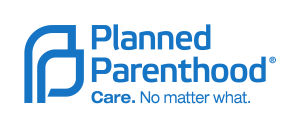
In continuing my analysis of Planned Parenthood’s organizational rhetoric, I will take a critical approach to examine my artifacts. Most of my artifacts can be found on this page: https://www.plannedparenthood.org/learn/abortion
The larger social issue conveyed in Planned Parenthood’s rhetoric is the importance of access to reproductive healthcare, including (but definitely NOT limited to) abortion. In their abortion-related materials, Planned Parenthood conveys a message of compassion, education, and flexibility. They exhibit compassion in their assertion that abortions are common, safe, and may be right for different people at different times. Additionally, they emphasize the importance of education because they provide all necessary information for prospective abortion patients on their website. Lastly, they assert the importance of flexibility by educating audiences about both options for abortion: taking pills or undergoing an in-clinic procedure. To analyze this in my larger project, I will employ ideological criticism to discover what ideologies and values Planned Parenthood promotes in their rhetoric.
Based on my viewings of the artifacts thus far, Planned Parenthood’s messages meet it needs because they educate audiences about the resources available to women seeking reproductive healthcare. Through the use of phrases like “considering an abortion,” “deciding if abortion is the right choice for you,” and “no pressure, no judgment,” they present a culture that is inviting, understanding of the individual patient’s needs, and wants to help through whatever means are appropriate for them. This treatment of a sensitive topic builds Planned Parenthood’s ethos because they promote what is right for the individual instead of simply pushing abortion–contrary to conservative stereotypes about their mission.
Audiences for this rhetoric include prospective patients, existing patients, and skeptics. Planned Parenthood addresses prospective and existing patients by educating them on the resources and services available at their clinics. Additionally, they consider the widely varying needs among this group by not insisting that abortion is or is not the right choice. Rhetoric addressed towards these patients implies that Planned Parenthood respects all points of view and wishes to accommodate all women’s beliefs when proceeding with their pregnancies. Planned Parenthood also addresses skeptics like anti-choice advocates by dismissing common myths about abortion (namely that it is unsafe or unethical). Their inclusion of this rhetoric suggests that they wish to dispel rumors about the procedure and ensure a comfortable experience for all involved. Additionally, Planned Parenthood’s rhetoric makes several assumptions. Primarily, their message assumes that all employees of the organization are ready, willing, and able to help women with their reproductive decisions. With this, the organization also assumes a universal understanding that all patients require different needs and that those needs will be accommodated regardless of personal beliefs about what a patient should do.
Visual rhetoric plays a vital role in Planned Parenthood’s content. On the “Abortion Information” page, the first image at the top of the screen is of two joined hands, which signify compassion and understanding during difficult times (such as facing an unplanned pregnancy). The shades of blue that appear throughout the organization’s logos and graphic design are calming colors which imply neutrality and a sense of ease. Additionally, the images serve as evidence of Planned Parenthood’s compassion. The photograph of the sign which reads “Care. No matter what” invite women from a myriad of circumstances to seek assistance with the organization. A similar example occurs in the photograph of the smiling doctor next to the text, “You can come to us, no matter what.” The woman’s demeanor suggests a friendly and welcoming atmosphere for all patients of Planned Parenthood.
Planned Parenthood’s rhetoric represents the interests of the company, its patients, and pro-choice advocates. The company’s interests–to provide reproductive healthcare to women in need–are most obviously addressed because the website’s rhetoric advocates for seeking help from them. Patients’ interests are also acknowledged when Planned Parenthood promises a culture of empathy, flexibility, and safety for all who enter their facilities. Lastly, pro-choice advocates’ interests are represented because the website promotes abortion as a safe and ethical procedure that is right for some people in some situations.
The goal of my study of Planned Parenthood’s rhetoric is to contribute to conversations about their value in contemporary society. During a time when conservative anti-choice critics often question the morality of the organization, their rhetoric asserts that they exist to help women, not harm them. Additionally, their rhetoric dismisses the idea that abortion is the only service provided by Planned Parenthood. The group offers comprehensive reproductive healthcare for men and women, and their rhetoric advertises this fact.